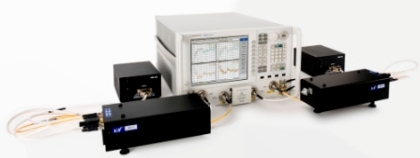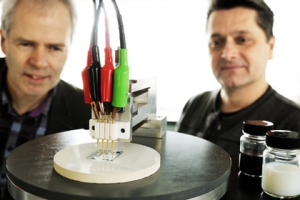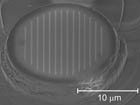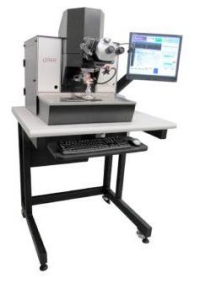Longtime semiconductor exec Takeshi Hattori continues his reporting on the aftermath of the massive Japanese earthquake and tsunami, with updates on the nuclear crisis, status of facilities and production struggles. See previous updates from Japan here, here, here, and here.
April 18, 2011 – The nuclear crisis is ongoing, ranked up to Level 7 last week, on the International Nuclear Event Scale (INES), the scale’s highest level, and equal to the 1986 Chernobyl nuclear disaster.
 Upon a strong request by the Japanese Government, Tokyo Electric Power Company (TEPCO), owner/operator of Fukushima Daiichi nuclear plant, released yesterday (Sunday, April 17) a roadmap or timetable to have the nuclear crisis under control, which will take six to nine months. On the same day, US Secretary of State Hillary Clinton made a short (five hour) visit to Tokyo to pledge full American support to help Japan recover from the March 11 earthquake and tsunami. The rolling blackouts are over, but shortage of ultrapure hydrogen peroxide as well as silicon wafers may slow semiconductor manufacturing in Japan (see below).
Upon a strong request by the Japanese Government, Tokyo Electric Power Company (TEPCO), owner/operator of Fukushima Daiichi nuclear plant, released yesterday (Sunday, April 17) a roadmap or timetable to have the nuclear crisis under control, which will take six to nine months. On the same day, US Secretary of State Hillary Clinton made a short (five hour) visit to Tokyo to pledge full American support to help Japan recover from the March 11 earthquake and tsunami. The rolling blackouts are over, but shortage of ultrapure hydrogen peroxide as well as silicon wafers may slow semiconductor manufacturing in Japan (see below).
TEPCO outlined a two-step scenario to bring the nuclear reactors under control. The first action would be to cool the reactors in a stable manner and prevent water with high levels of radioactivity from flowing out of the plant over the next three months. The second step is to reduce the amount of radiation being created by restoring the plant’s cooling system so that cooling water can be recirculated. Following these two steps within six to nine months, the company hopes to be able to bring the four reactors (made by GE/Toshiba/Hitachi) to a "cold shutdown" in which the temperatures at reactor cores are kept under 100°C.
After TEPCO’s announcement, MITI minister Kaieda said Sunday the government hopes to inform evacuees near the nuclear plant in Fukushima prefecture in six to nine months whether they can return home — but many evacuees claimed that the TEPCO roadmap is just a challengeable target, or "pie in the sky." Foreign Affairs minister Matsumoto asked Hillary Clinton, in Tokyo, to bring back the TEPCO roadmap to the US to critically evaluate by nuclear experts there.
Prime minister Kanno said today, through debate in the Diet [Japan’s legislative body], that future nuclear plant expansion program in Japan will be freezed. He also pointed out that it should be abolished that high-ranking MITI officials get executive positions at TEPCO and other electric power companies after their retirements.
A global team led by Hitachi and GE said last week that it would take at least three decades to make the nuclear reactors to be decommissioned and then to return the site to what the firms refer to as a "green field" state within legal limits of radiation for any residents. Toshiba said it could take at least 10 years.
Scheduled rolling blackouts in East Japan is virtually over, because spring has come with cherry blossoms and become warmer; also, everybody is making every effort to save electricity consumption everywhere (at home, offices, fabs, stores, and even at airports and train stations.) Some companies employ their own "summer time" (one-hour shift of their office hours) schedules: fab operations at night, national holidays and/or weekends, and one or two week fab shutdown in the peak summer with employees’ longer summer vacations all at once.
Shortages in key semiconductor materials
Semiconductor manufacturing in Japan is starting to expose a shortage of hydrogen peroxide (liquid) for standard silicon wafer cleaning and photoresist removal, as well as anticipated bulk-silicon wafer shortage in the very near future. According to Japanese industry sources, epitaxial silicon wafers has already been in shortage.
Hydrogen peroxide
The hydrogen peroxide (H2O2) plant of Tokyo-based Mitsubishi Gas Chemical Company (MGC) in Kashima, Ibaraki Prefecture, has stopped production due to infrastructural damage of the Kashima water-front industrial complex since March 11. This plant produces 104,000 tons of hydrogen peroxide annually, almost half of the domestic demand in Japan. The plant’s share of ultrapure hydrogen peroxide for silicon wafer cleaning and photoresist removal is some 60% in the Japanese semiconductor industry.
As of March 11, MGC had been accumulating its stockpiles to exceed one-month levels to prepare the scheduled maintenance/repair of the whole plant in this May-June timeframe. The plant will become partial operational within this month, but a plant shutdown for scheduled repair will be unavoidable, so the shortage is anticipated next month. In the end market the shortage is already a reality, and this is presently the major concern for semiconductor fab managers.
MGC is preparing to urgently import ultrapure (semiconductor-grade) hydrogen peroxide from some or all of their group manufacturing companies to produce it in Korea, Taiwan, Singapore, and the US, as well as general-purpose H2O2 from their group firms in China and Indonesia. MGC may even purchase H2O2 from companies outside the group worldwide, depending the shortage situation.
MGC had announced a severe control of shipments (probably shipping only 30% of the total orders) starting from the middle of April, but it was postponed to early May, with possible 70%-80% shipment of the total orders if the H2O2 imports will be timely done.
Silicon wafers
Shin-Etsu Hantodai’s Shirakawa plant in Fukushima Prefecture, the world largest 300mm wafer manufacturing base, expects to resume partial operation by the end of this month, but it is not clear when the facility will restart production as of today. If they cannot resume operation for several more weeks, the wafer shortage issue will become clear.
MEMC Electronic Materials has resumed production of 300mm wafers at its facility in Utsunomiya, Tochigi Prefecture. The facility has been shipping unaffected product and has resumed production on qualified process tools, while continuing to inspect, qualify, and ramp additional equipment. Full 300mm production is targeted for the middle of May. The facility’s small volume of 200mm wafer capacity, previously scheduled to be moved to the company’s Ipoh, Malaysia site during the third quarter of 2011, is being moved ahead of the original schedule.
SUMCO’s Yonezawa plant in Yamagata prefecture has resumed operation but very partially.
Toshiba
Iwate Toshiba Electronics, in Kitakami, Iwate Prefecture, resumed partial operation today (April 18) instead of formerly announced April 11. The one-week delay was due to continuous aftershocks and subsequent blackouts reported previously. Toshiba Mobile Display’s Fukaya plant in Saitama Prefecture, which restarted partial operation on March 28, will become fully operational at the end of this month.
Takeshi Hattori is president of Hattori Consulting International and editorial columnist of Electronic Journal in Japan, with more than 36 years experience in the semiconductor field. He is a Fellow of the Electrochemical Society, founding member of the International Symposium on Semiconductor Manufacturing, member of SEMI’s Japan regional standards committee and SEMI/SEAJ Forum, and The Confab advisory board, among many others.



 Upon a strong request by the Japanese Government, Tokyo Electric Power Company (TEPCO), owner/operator of Fukushima Daiichi nuclear plant, released yesterday (Sunday, April 17) a roadmap or timetable to have the nuclear crisis under control, which will take six to nine months. On the same day, US Secretary of State Hillary Clinton made a short (five hour) visit to Tokyo to pledge full American support to help Japan recover from the March 11 earthquake and tsunami. The rolling blackouts are over, but shortage of ultrapure hydrogen peroxide as well as silicon wafers may slow semiconductor manufacturing in Japan (see below).
Upon a strong request by the Japanese Government, Tokyo Electric Power Company (TEPCO), owner/operator of Fukushima Daiichi nuclear plant, released yesterday (Sunday, April 17) a roadmap or timetable to have the nuclear crisis under control, which will take six to nine months. On the same day, US Secretary of State Hillary Clinton made a short (five hour) visit to Tokyo to pledge full American support to help Japan recover from the March 11 earthquake and tsunami. The rolling blackouts are over, but shortage of ultrapure hydrogen peroxide as well as silicon wafers may slow semiconductor manufacturing in Japan (see below).


 The Q7000 Series has updated hardware and software, delivering a more tightly integrated assembly package, with approximately 30% fewer components and 50% less wiring than the Q2100 Series, which it replaces. These systems also cost less than the Q2100 models. The machines are designed with off-the-shelf components available directly from suppliers worldwide.
The Q7000 Series has updated hardware and software, delivering a more tightly integrated assembly package, with approximately 30% fewer components and 50% less wiring than the Q2100 Series, which it replaces. These systems also cost less than the Q2100 models. The machines are designed with off-the-shelf components available directly from suppliers worldwide.